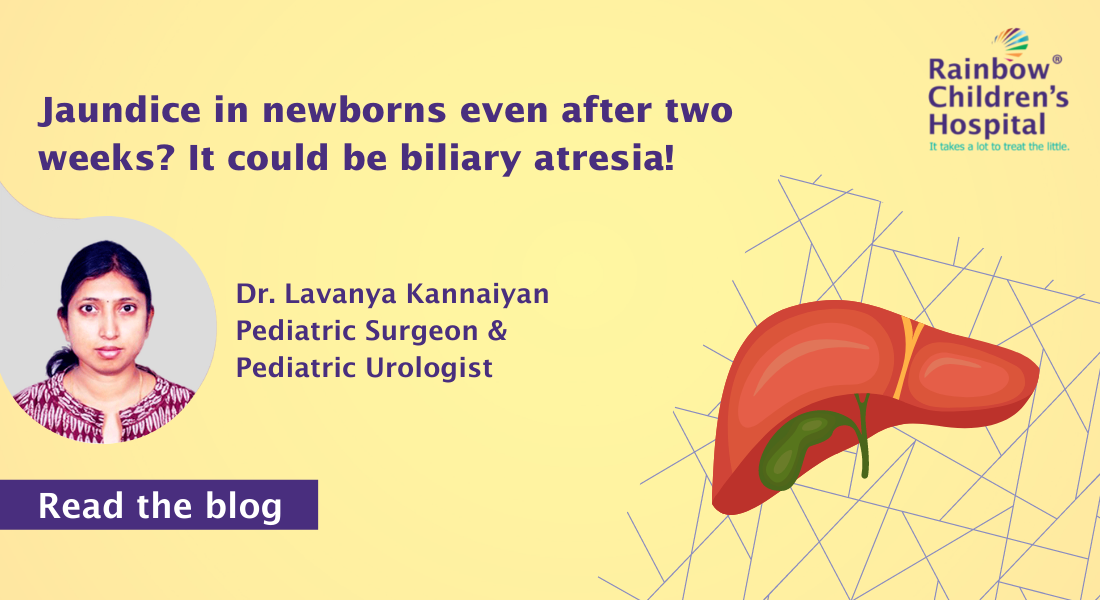Categories
Jaundice in newborns even after two weeks? It could be biliary atresia!
Oct 27, 2022
Biliary atresia is a liver disease that occurs in newborns. It is often identified shortly after birth. This condition occurs when the bile ducts inside or outside the liver do not develop normally.
When a child has biliary atresia, the bile ducts in the liver are blocked. The bile becomes backed up in the liver and damages the liver cells, eventually leading to liver cirrhosis and liver failure. No definite cause has been identified yet.
Babies with biliary atresia usually seem healthy at birth. Most often, symptoms start to occur between 2 weeks and 2 months of life. Symptoms may include:
Yellowish skin and eyes (jaundice)
Dark urine
Light-colored stools
Swollen belly (abdomen)
Weight loss
It has been advised that any suspicious an and prolonged jaundice in newborns needs complete investigations by a pediatric gastroenterologist and pediatric surgeon.
Biliary atresia is usually diagnosed with blood tests, ultrasound, nuclear scan and biopsy.
If biliary atresia is diagnosed early, the child will require surgery to connect the functioning bile ducts to the intestine. The surgery is called Kasai portoenterostomy. This surgery connects the bile drainage from the liver directly to the intestinal tract. This surgery should preferably be done before 6 weeks of age. Some children who undergo the procedure may eventually need a liver transplant. But the Kasai procedure is the first step in treating the child. After surgery, your child's digestion may return to normal or you may still need to give your child extra vitamins or adjust your child's diet. Talk with your child's healthcare provider for recommendations.











